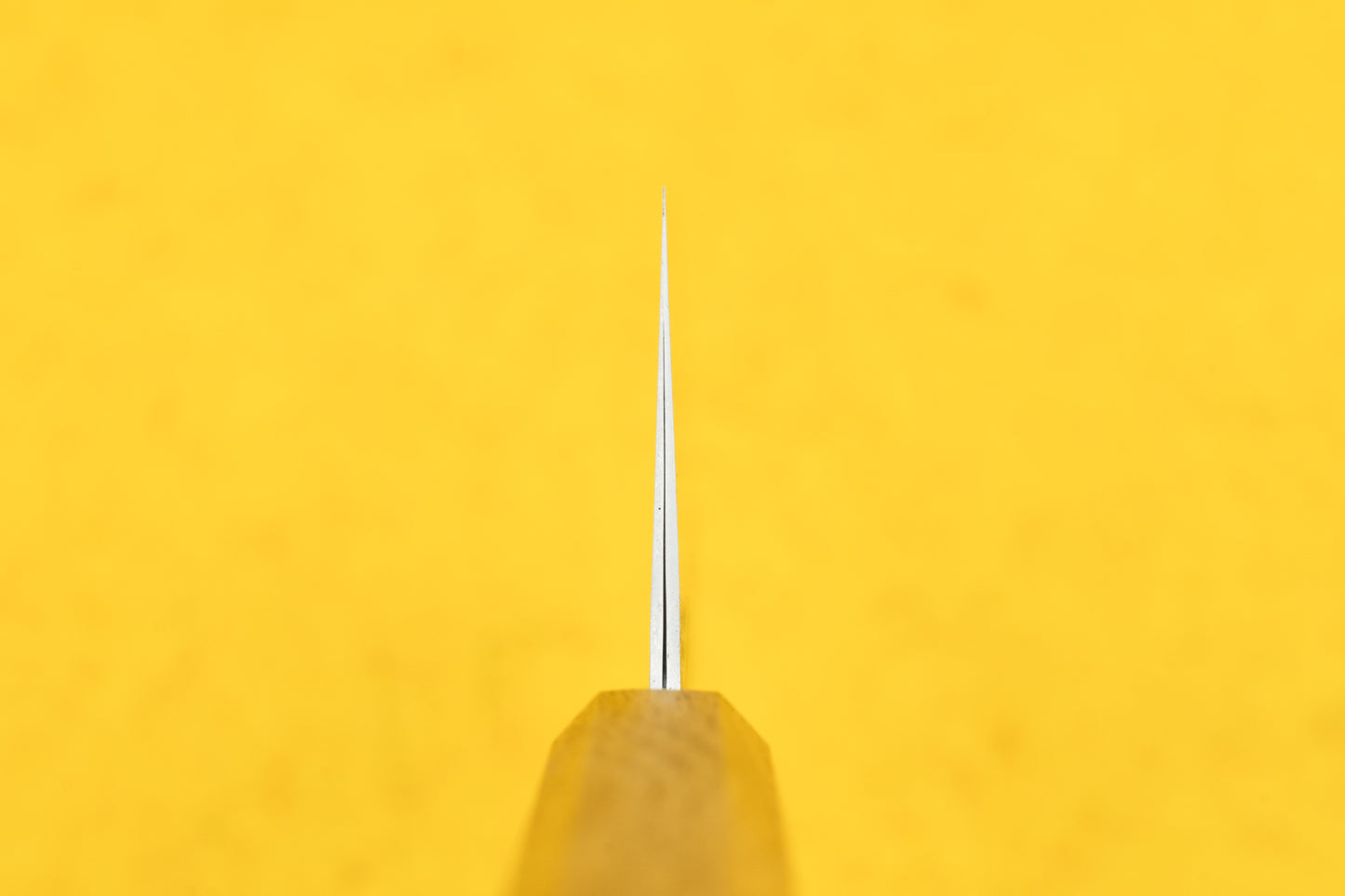Hado Sakai Sumi Nakiri 165mm
Hado Sakai Sumi Nakiri 165mm
Couldn't load pickup availability
About Hado Sakai Sumi - This Sumi line is an exciting collaboration between HADO and Knifewear. They approached us looking for new ideas and loved our design suggestions: black ‘kurouchi’ surface with a nicely polished ‘spine,’ or back of the knife, and ‘choil,’ as the junction of the blade and handle is called by knifenerds. The result is a knife that feels incredibly refined while maintaining a rough, handmade aesthetic. The traditional white carbon steel requires care to avoid rust but gets blazingly sharp—seriously, it’ll blow your mind the first time you use it.
The single piece of oak used for the handle is an excellent addition to the knife; it feels great in hand and looks stunning.
While the blacksmith handles the forging and hardening to ensure the knife keeps a crazy sharp edge for a long time, the sharpener uses their mastery of steel grinding and polishing to turn a raw piece of forged steel into a precision tool.
Nomura-san of HADO is one such master sharpener. HADO sources expertly crafted blades and refines them into kitchen scalpels. When sharpening, Nomua-san and his team always have the end user in mind, shaping blades so they get incredibly sharp, keep their edge as long as possible, and are truly impressive to cut with.
About the Shape - A Nakiri is a vegetable knife. Under utilized in the Western kitchen, the Nakiri’s flat blade is meant for the push/pull chopping of vegetables. Since the entire flat edge of the knife kisses the cutting board at once, you wont be turning the vegetable into an accordion. Accordion vegetables are still connected like a paper doll after you're “done” cutting them. To truly understand the awesomeness of a Nakiri we recommend making onion soup your first night with the knife. The ease of chopping will blow you away.
| Shape | |
|---|---|
| Blade Length | | |
| Blade Height | |
| Blade Thickness Above Heel | |
| Weight | |
| Steel Type |
Rust Prone ⓘ
This knife can rust, click to learn more.
|
| Rockwell Hardness | 62 - 63 |
| Edge/Bevel | |
| Handle | Wa (Japanese) Handle - Octagon Oak |
| Knifeline | Hado Sakai Sumi |
| Blacksmith | Yoshikazu Tanaka |
| Made in | Sakai, Osaka, Japan |
| Sharpener | Naohiro Nomura |
| Sharpened in | Sakai, Osaka, Japan |
| Brand | Hado Sakai |
A note about measurements: Knife edge length is shorter than stated, as Sakai knives are measured from the front of the handle to the tip. Additionally, some knives feature a small 'machi' gap between the handle and blade.
Knife Care
Knife Care
Shipping and Returns
Shipping and Returns
We aim to ship your order within 1 business day at Knifewear, if there is a hold up, we'll aim to let you know and give you a timeline.
We offer $3 shipping on orders over $100* anywhere in Canada and $200* to customers in the USA. We ship worldwide, and offer up to the minute rates from our shipping partner DHL.
*Konro Grills and some other larger items are excluded from the free shipping offer.
How do I make a return on an online order?
No worries, we've got you sorted. Head over to https://knifewear.com/returns and follow the prompts.
Can I pick up my order Curbside / At the store?
Absolutely, as long as all the items you are looking for are in stock at the location you want to pickup from, you'll be able to select that at the checkout. If one or more items aren't at your preferred location we are happy to ship it to you.
Request Additional Info
Request Additional Info






